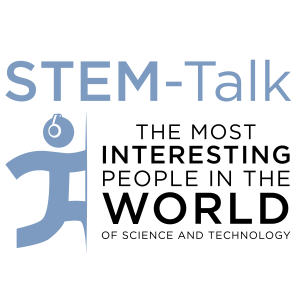
Episode 26: Richard Moon discusses deep-sea and high-altitude medicine
 2016-12-06
2016-12-06
Download
Right click and do "save link as"
Dr. Richard Moon had an unusual inspiration to practicing medicine: a television show, in black and white, entitled, “Medicine in the ‘60s.” He remembers being blown away by watching live surgeries performed on the show. This eventually led him to a career in the operating room—not as a surgeon, but an anesthesiologist.
Like many STEM-Talk guests, Moon wears many hats. In addition to being a physician, he is a renowned researcher in the hyperbaric and diving medicine. He is currently a professor of anesthesiology and medicine at Duke University, and the Medical Director of Duke’s Center for Hyperbaric Medicine and Environmental Physiology. http://anesthesiology.duke.edu/?page_id=828766
In this episode, Host Dawn Kernagis, herself a rising research scientist in undersea medicine, as well as a highly experienced diver—earlier this year, she was inducted to the Women Divers Hall of Fame—talks with Moon, one of her mentors. Dawn met Moon when she participated in one of his research projects as a diver, and she went to him with research ideas as a potential research intern. She eventually became one of his graduate students at Duke University.
In this lively and informative mentor-mentee discussion, Dawn and Moon talk about the history of hyperbaric medicine, including the establishment of Duke’s world-renowned Center for Hyperbaric Medicine and Environmental Physiology. They talk about medical conditions that can occur in deep sea diving, such as high pressure nervous syndrome and immersion pulmonary edema, as well as high-altitude sickness.
Moon shares insights about his experiments in both high altitude and deep sea medicine, as well as his own expedition in climbing Mount Everest.
Check out Moon’s home page at Duke: http://anesthesiology.duke.edu/?portfolio=richard-moon-md ; as well as his lecture at IHMC last January: “From the Ocean Depths to the Mountain Tops: How Do Humans Adapt?” https://www.ihmc.us/lectures/20160121/
00:15: Dawn introduces Ken and describes Moon as a world-renowned physician and researcher who works in hyperbaric and diving medicine.
00:40: Dawn says she was “very lucky to have Dr. Moon as a mentor.” She participated in his research projects, as a diver. She then went to him with research ideas, and he accepted her as a graduate student, and he’s been a mentor and colleague ever since.
1:45: Ken reads a five-star iTunes review from “GTG2010” called “Exploding Kid:” “Dear STEM-Talk, I like your show. The super telescope looking at asteroids is cool. I like it so much I’m going to explode. Love, Griffin, age 6.”
2:38: Dawn runs through Moon’s bio. He holds an M.D. and a C.M. from McGill University in Canada, and a Master’s degree in biomedical engineering from the University of Toronto. He is a member of the Royal College of Physicians of Canada, as well as the American Board of Internal Medicine. He has authored hundreds of peer-reviewed publications.
3:48: Dawn welcomes Moon to the podcast.
4:06: Moon describes what sparked his interest in medicine when he was in high school. He watched a television show, in black and white, called “Medicine in the ‘60s.” “It showed operations. It was mind-blowing, so I decided that I had to go into medicine.”
4:49: In medical school, Moon’s first interest was in pulmonary medicine—simply because in the first-year lecture series on organ systems, the one on the pulmonary system was the best. Yet, he felt compelled to do something different and took a couple of years off to study biomedical engineering.
6:20: Moon went to Duke University with a fellowship in pulmonary medicine as well as an opportunity to undergo scientific training in diving physiology. One of his mentors, Enrico Camporesi, encouraged him to go into anesthesiology.
7:20: “Eventually he [Camporesi] won me over. That’s where I am today.”
7:46: Moon’s interest in diving physiology initially came from the television program “Sea Hunt.
view more
More Episodes
012345678910111213141516171819
Create your
podcast in
minutes
- Full-featured podcast site
- Unlimited storage and bandwidth
- Comprehensive podcast stats
- Distribute to Apple Podcasts, Spotify, and more
- Make money with your podcast
It is Free
- Privacy Policy
- Cookie Policy
- Terms of Use
- Consent Preferences
- Copyright © 2015-2024 Podbean.com



